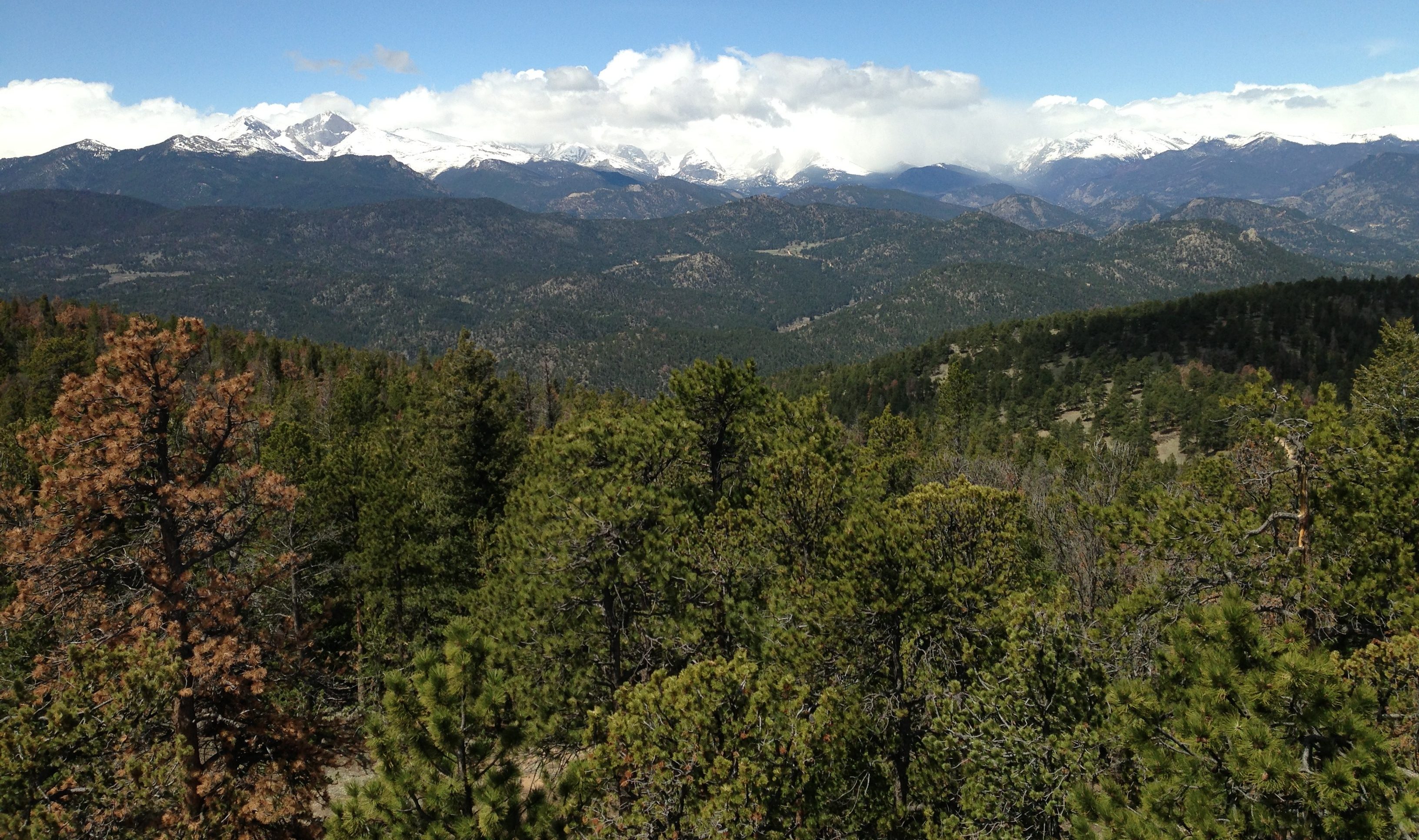Below you will find research projects that have ended. For a list of deliverables, click here, and for description of ongoing projects, click here.
First Beetles, now Fire! (2018-2022)
The bark beetle epidemic of the late 2000s and early 2010s was the most important factor of tree mortality over the past decade. Anybody traveling through the Southern Rocky Mountains can see the aftermath of the outbreak, with dead trees scattered everywhere in the landscape. Predicted warmer and drier climate conditions will likely increase the frequency and severity of wildfires in the future. Despite these two facts, we know very little about the potential effects of double-disturbances such as fires that burn in previously beetle-killed forests!
Such effects may include complex feedbacks between vegetation and ecosystem fluxes (i.e. the movement of water, carbon, and nutrients between soils, plants, and the atmosphere). Consider a lodgepole pine (Pinus contorta) forest where nearly half of the trees died several years ago. The forest floor consists of a thick layer of needles that fell from the dead trees and decompose slowly. In addition, seed inputs are halved compared to healthy forest. Now consider a fire sweeping through this forest. Will the forest regrow at the same rate as if it had been a healthy forest before the fire, with less litter and more seeds?

In above case, we are forgetting about other very important factors. For example, the fire also removed any litter and, in cases of severe crown fires, killed all vegetation. This changes the nutrient and water availability in the soil, as trees and other plants are no longer using the water stored in the soil. Furthermore, nutrients are no longer replenished due to very limited rates of decomposition. These factors will also affect seedling and understory growth!
Our project specifically looks at three disturbance scenarios in an area that was burned by the Badger Creek fire in 2018 in southeastern Wyoming: (1) Bark beetle followed by no fire; (2) Bark beetle followed by understory fire; and (3) Bark beetle followed by stand-replacing fire. We are using eddy flux systems to measure water and carbon exchange between soils, plants, and the atmosphere in these different disturbance scenarios. We are also sampling soils and leaves of regrowing vegetation to assess nutrient availability. To assess and map soil water differences between different burn intensities, we are using electrical resistivity tomography (ERT) and various other sensors. Lastly, we are sampling the vegetation throughout the period of the project to compare seedling establishment and growth of shrubs, grasses, and forbs.
Shade-Avoidance in Sugar Beets (2018)
In agricultural fields, yield loss due to weeds is typically attributed to resource depletion from direct competition between the crop and the weeds. As the weeds use water, nutrients, and light, there is less available for the crop, resulting in reduced growth. Far less is known about the effects of indirect competition, for example due to the mere presence of nearby weeds without direct competition for resources (i.e. shade avoidance response); knowledge that is crucial for the optimization of weed management to maximize crop yield.
We are testing which stages in the life cycle of sugar beets (Beta vulgaris), an important crop in Wyoming and worldwide, are most affected by yield loss due to shade avoidance responses. We are also testing how shade avoidance responses compare to direct competition for resources under different irrigation levels. All experiments are performed in a controlled environment at the University of Wyoming.





